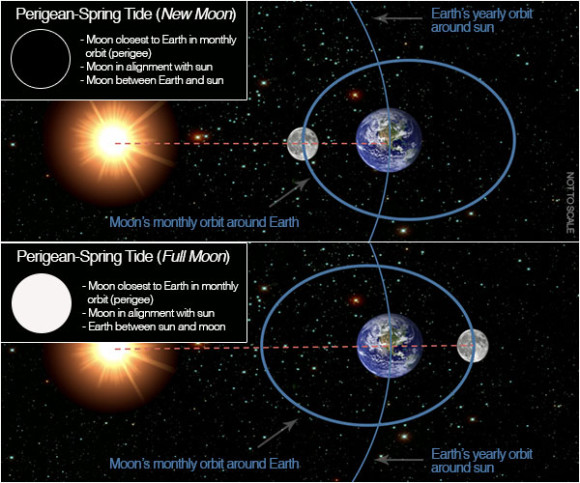
The moon on this January 1, 2014 is new. That means it’s more or less between the Earth and sun for this monthly orbit. The moon is also at perigee today, or closest to Earth for this month. A new moon at perigee brings about a phenomenon of higher-than-usual tides, called perigean spring tides.
In this case, the word spring has nothing to do with the season. It’s spring in the sense of “to leap up.”
Today’s moon is new at 11:14 UTC.
Today’s perigee happens around 21:00 UTC and brings the moon second-closest for this entire year at 221,782 miles (356,923 km).
How do I translate Universal Time to my time?
The new moon – or full moon – coincides with perigee about three or four times a year. We used to called these moons perigean new moons or perigean full moons, but nowadays we just call them supermoons.
Today’s supermoon is actually the first of two supermoons for the month of January 2014. Both the January 1 and January 30 supermoons come when the moon is at the new phase, and at perigee. Both will bring higher-than-usual earthly tides.
There’s only a small difference between a perigean spring tide – like the one that’ll be experienced along all earthly coastlines around now – and normal tides. In most cases, the difference is only a couple of inches above normal spring tides. Plus there’s a lot of variation in the range of the tides from place to place along coastlines. The highest earthly tides tend to happen at the Bay of Fundy.
But large perigean spring tides can also happen if there’s a storm around the same time as these tides. When that happens, flooding can occur.
Read more: Two supermoons in one month: January 1 and 30, 2014











